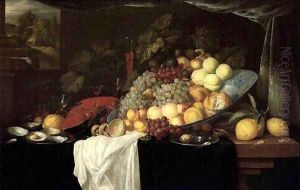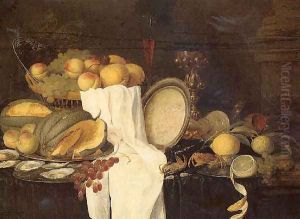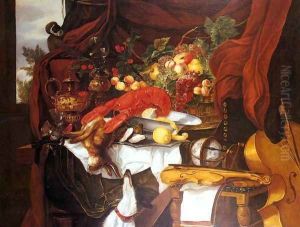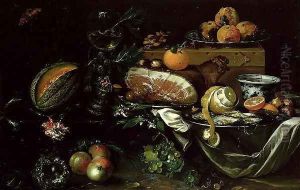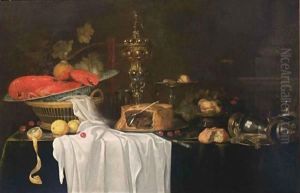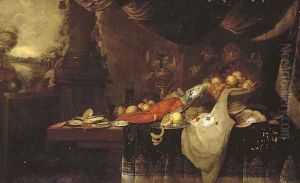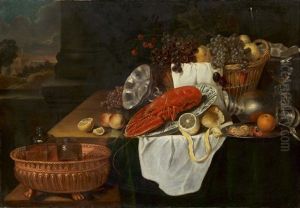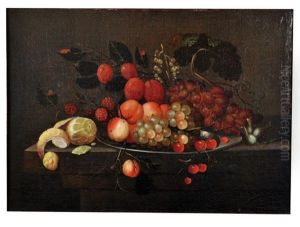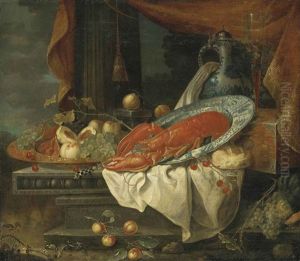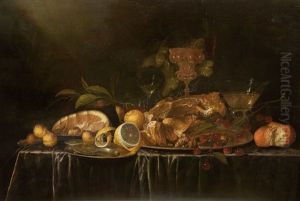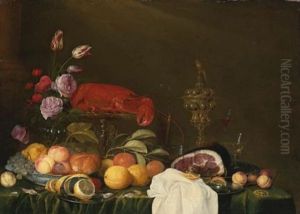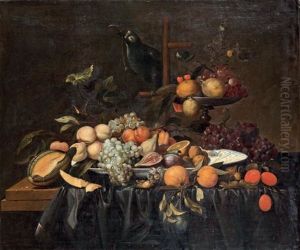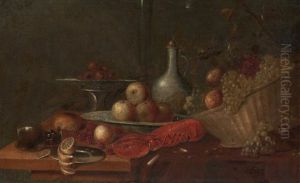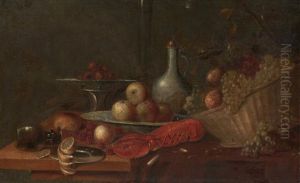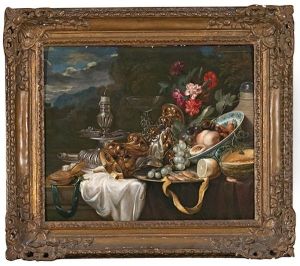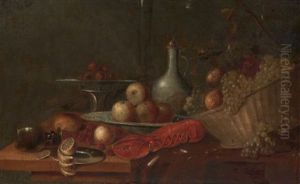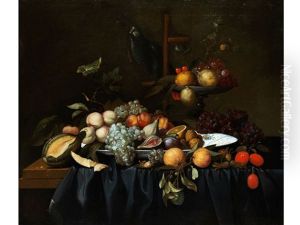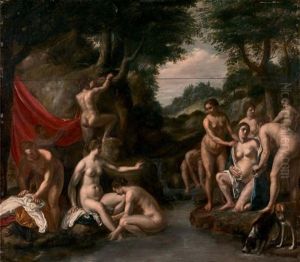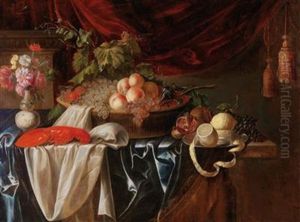Andries Benedetti Paintings
Andries Benedetti was a Flemish painter born in 1615, notable for his contributions to the Baroque period, a movement characterized by dramatic expression, rich colors, and bold manipulation of light and shadow. Although not as widely known as some of his contemporaries, Benedetti's work is an important part of the Flemish artistic legacy of the 17th century. His oeuvre primarily consisted of still lifes, including sumptuous banquet scenes, which were a popular genre in Flanders during this time. These compositions often featured an abundance of food, silverware, and glassware, showcasing not only the artist's skill in rendering different textures and surfaces but also reflecting the contemporary interest in wealth, abundance, and the transience of earthly pleasures.
Benedetti's life and career were deeply intertwined with the city of Antwerp, a major artistic and commercial center in the 17th century. Antwerp was the heart of the Flemish art scene, attracting artists from all over Europe. It was in this vibrant environment that Benedetti trained and worked. However, detailed records of his training and the early part of his career are scarce, which is not unusual for artists of this period. It is known, though, that he was influenced by the works of Jan Davidsz de Heem, a leading still-life painter of the time, and possibly worked in de Heem's workshop. This influence is evident in Benedetti's meticulous attention to detail and the lush, complex compositions of his still lifes.
Despite his talent, Andries Benedetti remains a somewhat elusive figure in art history. His works were often attributed to other artists, and only a limited number of paintings have been firmly attributed to him. This misattribution is partly due to the similarities in style and subject matter with his contemporaries and partly because of the general lack of documentation. Nevertheless, the paintings that have been confidently attributed to Benedetti reveal an artist of considerable skill and creativity, capable of capturing the opulence and vibrancy of his era.
Benedetti's death in 1674 marked the end of a career that, while not as celebrated as some of his peers, contributed to the rich tapestry of Baroque art in Flanders. Today, his works are held in several museums and collections, where they continue to be studied and appreciated for their beauty and historical value. Through these pieces, Andries Benedetti's legacy lives on, providing insight into the artistic and cultural world of 17th-century Flanders.
